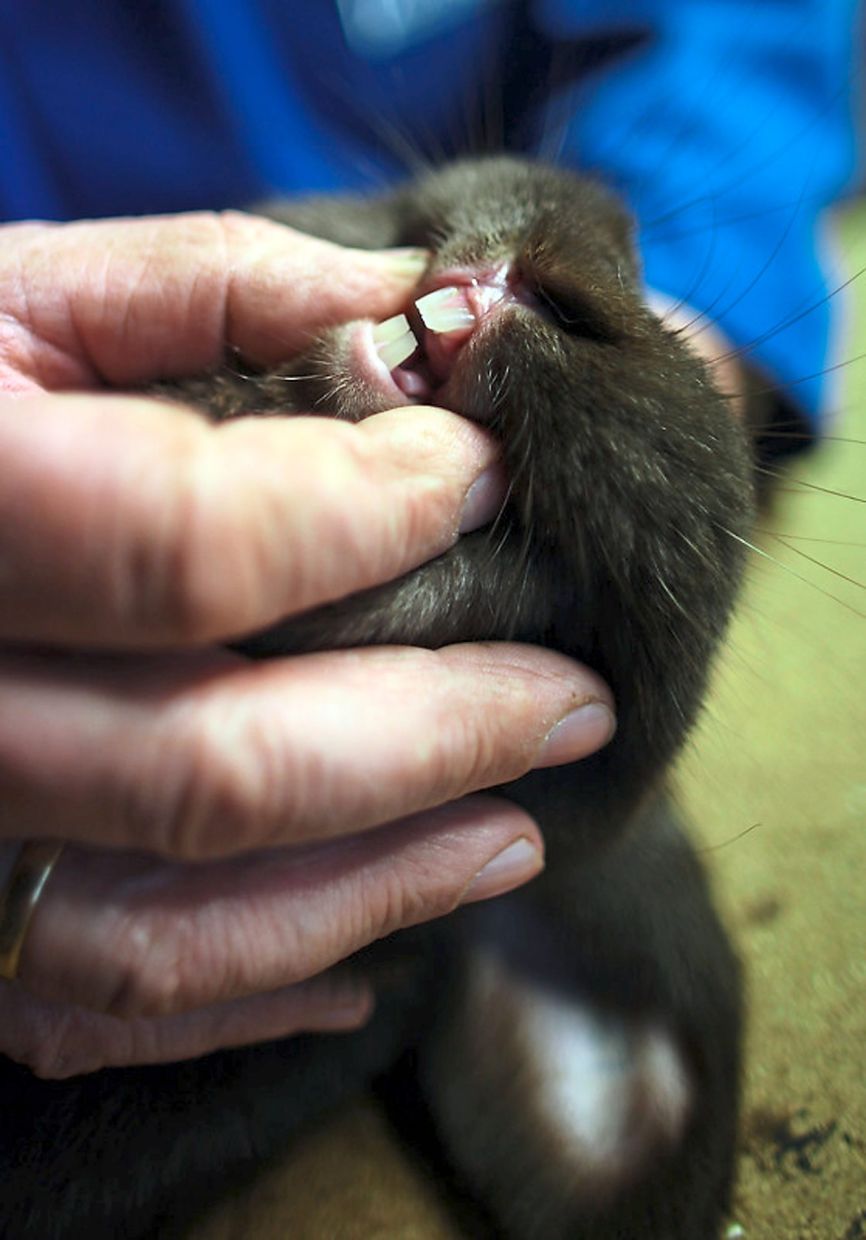If you know the signs, you can detect dental problems experienced by your rabbit earlier. Photos: dpa
When rabbits are sick, they often suffer in silence for a long time.
“As prey animals, they are masters at hiding illnesses,” said veterinarian Cecilia Siedl.
In the wild, a sick rabbit can put the whole group in danger of predators, meaning they’re often excluded to protect the colony. This makes rabbits hide their ailments.
Domestic rabbits behave according to the same instincts.
“When you see obvious symptoms in a rabbit, the disease is already far advanced, so you must act quickly,” said Siedl.
For many owners, dental problems are a surprising discovery when their rabbit has problems with eating or digestion.
If you know the signs, you can detect dental problems as early as possible.
“The animal may have increased salivation so that the fur around the mouth is stuck together or matted,” said Siedl.
In severe cases, the rabbit’s chest may be stuck together with saliva.
Changes in feeding behaviour can also indicate dental problems. For example, if the animal prefers to eat soft lettuce leaves over hay, which has to be chewed a lot, this may be a sign.
The rabbit may “come running to the food, but when they start eating, they chew on a leaf for what feels like an eternity, or it even falls out of their mouth without being chewed”, the veterinarian said.
Weight loss is another potential sign of dental issues. Pay attention to your rabbit’s diet.
According to Siedl, the ideal diet consists of fresh diverse leafy greens. Meadow herbs like dandelion, ribwort and clover are also suitable. Rabbits should always have access to hay.
The animals should also be regularly given fresh branches from trees such as willows or fruit trees.
Even in cold weather, outdoor rabbits should be fed fresh food like cabbage, lettuce, herbs, greens and spinach.
Pellets are not favourable for several reasons. Firstly, the chewing movement required when eating pellets is different from the movement used when chewing fresh greens. Chewing pellets hardly wears down the teeth. The chewing movement can even promote inflammation.
Secondly, pellets slow down digestion, swell up in the stomach and thus are more saturating, causing rabbits to eat less fresh food as a result.
Because dental problems are noticed too late in many rabbits, treatment is often costly. If the root of the teeth or the jawbone is affected, this cannot be fixed, but only managed with targeted treatment, says veterinarian Diana Ruf.
Treatment might even include tooth extraction, which can only be done under anaesthesia.
It’s best to check your rabbit’s teeth from the front and side once a week to look out for issues.
The teeth should be smooth and shiny and have no transverse grooves. Longitudinal grooves, however, are normal.
The lower incisor must be behind the upper incisor. Behind the upper incisors, rabbits have a second row of teeth with two pivot teeth. These should be straight.
Ruf says it’s also a good idea to examine the jaw and weigh your rabbit weekly, in an effort to detect dental issues early. – dpa/Maria Berentzen






